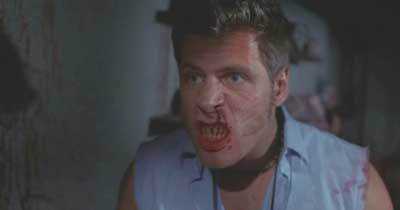

(This YouTube video is a good overview.)ĭuke herself testified at the trial that she “always asked Eduardo’s advice before buying or planning anything for her estates.” He'd counseled her on the purchase of art worth tens of millions and transformed the abandoned greenhouses on her New Jersey property into a spectacular botanical display. He’d just designed sets for Sharon Tate’s next film, Don’t Make Waves, and he could have realized a six-figure income for decades. The year before, Eduardo had earned the equivalent of $351,000 as a set designer on such big-budget features as The Sandpiper, starring Elizabeth Taylor and Richard Burton.

She destroyed his body and then she eviscerated his memory.” That came in 1971 during the wrongful death trial.Īt the time, attorneys for the family argued that Eduardo’s career as a Hollywood designer was just catching fire when he told the possessive heiress he was leaving, moments before she killed him. In that 8,000-word piece, I quoted Eduardo’s niece as saying, “She killed him twice. Soon a remarkable number of surviving witnesses, including many of the cops who’d worked the case, came forward.īy July 2020, my initial findings were published in Vanity Fair. Then in 2018, I returned to Newport and started asking questions. It was a story I’d always wanted to investigate, but it took me more than half a century to get to it. The verdict came less than four days after she had crushed Eduardo Tirella, her “longtime companion,” under the wheels of a two-ton station wagon on October 7, 1966. The 1966 cover-up of the murder of Eduardo Tirella, crushed to death by Doris Duke outside the gates of Rough Point, her Bellevue Avenue estate, has again been embraced by officials in Newport, R.I., the tony resort city that was the scene of the crime.Īs a Newporter myself, I began my career in journalism as a cub reporter for The Newport Daily News, eight months after the “unfortunate accident,” when the town was buzzing with rumors that Miss Duke, the fabulously wealthy heiress to fortunes derived from the American Tobacco Co., Alcoa Aluminum, and Duke Power (now Duke Energy), had bought her way out of murder charges.
Murder set pieces wiki series#
That may sound like the storyline for a fictional scripted dramatic series on Netflix or Amazon Studios, but all of it is true.

What if the family of the victim, a 42-year-old war hero and Renaissance Man who had toiled for the killer for years, politely asked her to settle with them for his wrongful death, but she refused at a time when she was making $1 million a week in interest on her fortune? What if the family then sued and she was found liable for his killing? Then after her lawyers so demeaned him at trial, the damages were just $75,000, leaving his five sisters and three brothers with $5,620 each?įifty-five years later, what if compelling new evidence was uncovered indicating that the heiress got away with murder - testimony from a previously unknown eyewitness, so credible that it caused the police to reopen the case? Then, five months after that, what if that same police department closed it again, claiming there was “no evidence” to change the verdict they’d reached in the first place?
Murder set pieces wiki full#
What was the life of a gay man worth in 1966? What if he was violently killed by the richest woman in America in a resort town where she held forth in one of the most impressive estates in a city full of mansions? What if, 96 hours after the homicide, the local police ruled it “an unfortunate accident,” then, days after escaping criminal charges, the heiress, who was worth billions, began giving tens of thousands of dollars to the city?


 0 kommentar(er)
0 kommentar(er)
